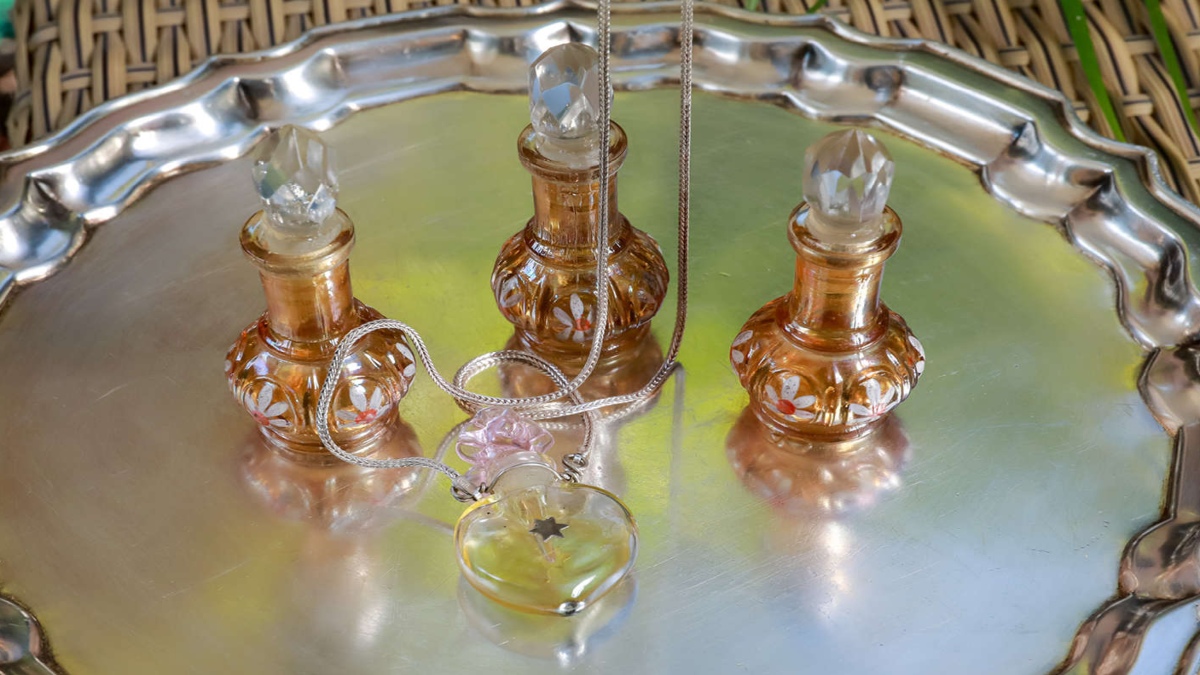


‘As little girls we were told that Avadhinafasat and nazakat was personified by the gentle whiff of the ittar that was better perceived by the nose of the one standing before you more than the one who dabbed it gently on her pulse point. It was seen as a mood elevator, a relaxant and a calmer.”
Alka Rani Singh, from the Pratapgarh Royal family is a true blue evolved soul who is constantly immersed in recreating the gentle aura of her Avadh. Be it through the hand painted saris that she creates, gently layering a gossamer chiffon with splashes of organic colours or the revival of the long forgotten craft of weaving tissue gold saris that are one thread silk and one thread gold.


She has, however found her niche, her inner calling in the role of a beauty evangelist who, with missionary zeal, is recreating every forgotten beauty ritual that she saw her grand mother and mother perform each day. The Princess of Pratapgarh married to a family of bureaucrats, Alka grew up in the sleepy town of Pratapgarh that her family were the talukdaars of. Where their badihaveli co existed with the sprawling farms, the village folks and the many performing artists who mastered crafts of the heart and the hand.
It was whilst growing up that she learnt from her maternal grand mother and mother, who was married into Vijaypur, close to Mirzapur in Avadh, how a gentle princess were to keep her eyes lined with kohl, her hair fragrant with the whiff of lubaan and her skin porcelain like with ubtan. “I was so enchanted with the way the women of the house would spend a full day extracting natural kajal over a clay lamp, kneading it in pure cow’s ghee and infusing the wick with lots of herbs before it was gently filled into a kajaldaani.” Alka creates the same kajal, made following the ancient practice, simply rolling this organic kajal on a convenient roll on stick.
Ittars too are close to her heart and she presents them in hand blown glass miniature bottles that are worn around the neck. She shares, “Every Princely family in Avadh had its own famed fragrance. Pratapgarh was known for roohkhas (concentrated) and roohmogra. These ittars basically were not distilled in sandalwood oil and so strong that one dot rubbed on your pulse point did the trick.”
Alka revived this tradition of ittar making, also commissioning a family of blown glass artist to make her the bottles. “There is a family in Agra that used to make tiny animals out of hand blown glass. They hand crafted my bottles with such joy.”
Alka’s ittars “Ease your nerves and tackles your anxiety. The pocket sizedbottles help you to keep dabbing. They are a replica of the bottles our mothers got made in silver and gold. Many even embellished with precious stones.”
The royals of Avadh believed that skin must be served with the same delicate food that you consume: The refined herbs, the organic oils. It is with this vision that she has recreated her shahiubtanfor the hair that is made from dry fruits, wild haldi, ashwagandha and other edible ingredients. “My ubtan is a traditional recipe made from 32 convenient ingredients. The 33 added by me is pure gold dust which I get from and ISO certified lab.”
The purist in her also launched a comb nadcrafted from neem that is bacteria and fungus free. “Combing the hair is a ritual that helps rush blood to your scalp. The plastic bristles of the brish simply adds friction to the hair. My comb has rounded, wooden teeth that literally massage the scalp.” Add to that her lubaan, a ritual of running a incense stick under your hair. The lubaanstick is fileld with goodness of googal and ashwagandha and when placed under the long tresses adds a fragrance and body to the hair.
“We are all getting close to our roots then why not return to beauty rituals that are linked to the earth?”